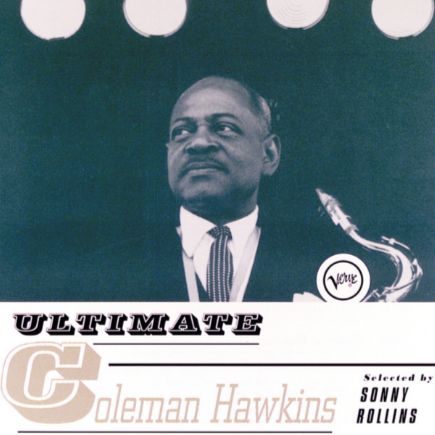Just One of Those Things: une miniature brillante
Écrite et composée par Cole Porter pour sa comédie musicale Jubilee, créée à Broadway en 1935 — dont est également issu le célèbre Begin the Beguine —, Just One of Those Things s’est imposée comme un standard incontournable du jazz. Interprétée aussi bien par des chanteurs que par des instrumentistes, elle séduit depuis des décennies par son équilibre subtil entre sophistication musicale et émotion contenue.
Cette chanson incarne à merveille l’esprit du Great American Songbook: une mélodie brillante, souple et chantante, associée à un texte empreint d’ironie tendre, presque mélancolique. Elle évoque une aventure amoureuse brève, mais précieuse, acceptée sans regret, avec une forme d’élégance désabusée typiquement porterienne, qui réside ici dans cette capacité à conjuguer légèreté formelle et profondeur émotionnelle.
Musicalement, Just One of Those Things se distingue par une structure harmonique fluide mais complexe, dont les modulations inattendues et les changements d’accords stimulent l’imagination des improvisateurs. Dès l’ère swing, les musiciens s’en sont emparés pour y explorer le rebond rythmique et la clarté de la ligne.
Coleman Hawkins et la modernité en gestation
Le 29 mai 1944, à New York, Coleman Hawkins enregistre une version saisissante de Just One of Those Things, en compagnie de trois figures essentielles: Teddy Wilson au piano, John Kirby à la contrebasse et Sidney Catlett à la batterie. Ce quartette illustre à merveille l’esprit d’un jazz en pleine transformation, où l’élégance héritée du swing se conjugue déjà avec une recherche d’expressivité plus moderne.
Coleman Hawkins, alors au sommet de sa maturité artistique, s’empare de ce standard avec une autorité tranquille, déployant son phrasé dense, chantant et d’une intensité lyrique unique. Son saxophone ténor, dont il avait fait l’instrument-roi du jazz depuis Body and Soul en 1939, colore la pièce d’une profondeur orchestrale, transformant une chanson légère en une méditation pleine de vitalité.
Les partenaires de Hawkins apportent chacun une contribution essentielle. Teddy Wilson, pianiste au toucher élégant, apporte clarté et subtilité à l’ensemble. John Kirby, à la contrebasse, assure une assise souple et mélodique qui enrichit la texture sonore. Quant à Sidney Catlett, batteur au swing puissant et nuancé, il propulse l’énergie du groupe sans jamais étouffer l’élan collectif.
Just One of Those Things: una miniatura brillante
Escrita y compuesta por Cole Porter para su comedia musical Jubilee, estrenada en Broadway en 1935 — de la que también proviene la célebre Begin the Beguine —, Just One of Those Things se ha convertido en un estándar imprescindible del jazz. Interpretada tanto por cantantes como por instrumentistas, fascina desde hace décadas por su sutil equilibrio entre sofisticación musical y contención emocional.
Esta canción encarna a la perfección el espíritu del Great American Songbook: una melodía brillante, flexible y cantabile, unida a una letra impregnada de una ironía suave, casi melancólica. Evoca una historia de amor breve pero valiosa, aceptada sin remordimientos, con esa elegancia desencantada tan propia de Porter, que sabe conjugar ligereza formal y profundidad emocional.
En el plano musical, Just One of Those Things se distingue por una estructura armónica fluida pero compleja, con modulaciones inesperadas y cambios de acordes que estimulan la imaginación de los improvisadores. Desde la era del swing, los músicos han hecho de esta pieza un campo fértil para explorar tanto el rebote rítmico como la claridad melódica.
Coleman Hawkins y la modernidad en gestación
El 29 de mayo de 1944, en Nueva York, Coleman Hawkins grabó una versión deslumbrante de Just One of Those Things, acompañado por tres figuras esenciales: Teddy Wilson al piano, John Kirby al contrabajo y Sidney Catlett a la batería. Este cuarteto refleja con maestría el espíritu de un jazz en plena transformación, donde la elegancia heredada del swing se combina ya con una búsqueda de mayor expresividad moderna.
En la cima de su madurez artística, Hawkins aborda este estándar con una autoridad serena, desplegando un fraseo denso, cantabile y de una intensidad lírica única. Su saxofón tenor, al que había convertido en el instrumento rey del jazz desde Body and Soul en 1939, dota a la pieza de una profundidad casi orquestal, transformando una canción ligera en una meditación cargada de vitalidad.
Cada uno de los compañeros de Hawkins aporta una contribución esencial. Teddy Wilson, pianista de toque elegante, ofrece claridad y sutileza al conjunto. John Kirby, al contrabajo, asegura una base flexible y melódica que enriquece la textura sonora. Por su parte, Sidney Catlett, baterista de swing poderoso y matizado, impulsa la energía del grupo sin sofocar nunca su impulso colectivo.
Just One of Those Things: una miniatura brillante
Scritta e composta da Cole Porter per la commedia musicale Jubilee, andata in scena a Broadway nel 1935 — da cui proviene anche la celebre Begin the Beguine —, Just One of Those Things si è affermata come uno standard imprescindibile del jazz. Interpretata sia da cantanti che da strumentisti, seduce da decenni grazie al suo sottile equilibrio tra raffinatezza musicale ed emozione trattenuta.
Questa canzone incarna alla perfezione lo spirito del Great American Songbook: una melodia brillante, flessibile e cantabile, accompagnata da un testo intriso di ironia delicata, quasi malinconica. Racconta una storia d’amore breve ma preziosa, accolta senza rimpianti, con quella tipica eleganza disincantata di Porter, capace di unire leggerezza formale e profondità emotiva.
Dal punto di vista musicale, Just One of Those Things si distingue per una struttura armonica fluida ma articolata, con modulazioni impreviste e cambi di accordi che stimolano la fantasia degli improvvisatori. Già durante l’epoca dello swing, i musicisti hanno trovato in questo brano un terreno ideale per esplorare il ritmo e la limpidezza della linea melodica.
Coleman Hawkins e la modernità in gestazione
Il 29 maggio 1944, a New York, Coleman Hawkins registrò una splendida versione di Just One of Those Things, affiancato da tre figure essenziali: Teddy Wilson al pianoforte, John Kirby al contrabbasso e Sidney Catlett alla batteria. Questo quartetto riflette con maestria lo spirito di un jazz in piena trasformazione, dove l’eleganza ereditata dallo swing si intreccia già con la ricerca di una maggiore espressività moderna.
All’apice della sua maturità artistica, Hawkins affronta questo standard con un’autorità serena, dispiegando un fraseggio denso, cantabile e di un’intensità lirica unica. Il suo sassofono tenore, che aveva reso lo strumento sovrano del jazz sin da Body and Soul nel 1939, conferisce al brano una profondità quasi orchestrale, trasformando una canzone leggera in una meditazione intrisa di vitalità.
Ciascuno dei compagni di Hawkins apporta un contributo essenziale. Teddy Wilson, pianista dal tocco elegante, dona chiarezza e sottigliezza all’ensemble. John Kirby, al contrabbasso, assicura una base flessibile e melodica che arricchisce la tessitura sonora. Sidney Catlett, batterista dallo swing potente e sfumato, sostiene l’energia del gruppo senza mai soffocare lo slancio collettivo.
Just One of Those Things: a brilliant miniature
Written and composed by Cole Porter for his Broadway musical Jubilee, premiered in 1935 — which also gave us the iconic Begin the Beguine — Just One of Those Things has become a staple of the jazz repertoire. Performed by both vocalists and instrumentalists, it has captivated audiences for decades with its delicate balance of musical sophistication and emotional restraint.
The song perfectly embodies the spirit of the Great American Songbook: a bright, flowing, and singable melody paired with lyrics steeped in gentle irony, tinged with melancholy. It reflects a fleeting love affair, cherished for what it was, and accepted without regret — all conveyed through Porter’s signature blend of lightness and emotional depth.
Musically, Just One of Those Things stands out for its smooth yet complex harmonic structure, with unexpected modulations and chord changes that spark the imagination of improvisers. Since the swing era, musicians have embraced it as a playground for rhythmic bounce and melodic clarity.
Coleman Hawkins and modernity in the making
On May 29, 1944, in New York, Coleman Hawkins recorded a striking version of Just One of Those Things, joined by three essential figures: Teddy Wilson on piano, John Kirby on bass, and Sidney Catlett on drums. This quartet perfectly reflects the spirit of a jazz in transformation, where the elegance inherited from swing already merges with a search for more modern expressiveness.
At the height of his artistic maturity, Hawkins approached this standard with calm authority, unfolding a dense, singing phrasing marked by unique lyrical intensity. His tenor saxophone, which he had established as the king of jazz instruments since Body and Soul in 1939, imbues the piece with an almost orchestral depth, turning a lighthearted song into a meditation full of vitality.
Each of Hawkins’s partners contributes something essential. Teddy Wilson, with his elegant touch at the piano, brings clarity and subtlety to the ensemble. John Kirby, on bass, provides a supple and melodic foundation that enriches the overall texture. And Sidney Catlett, a drummer of powerful and nuanced swing, drives the group’s energy without ever stifling its collective momentum.


